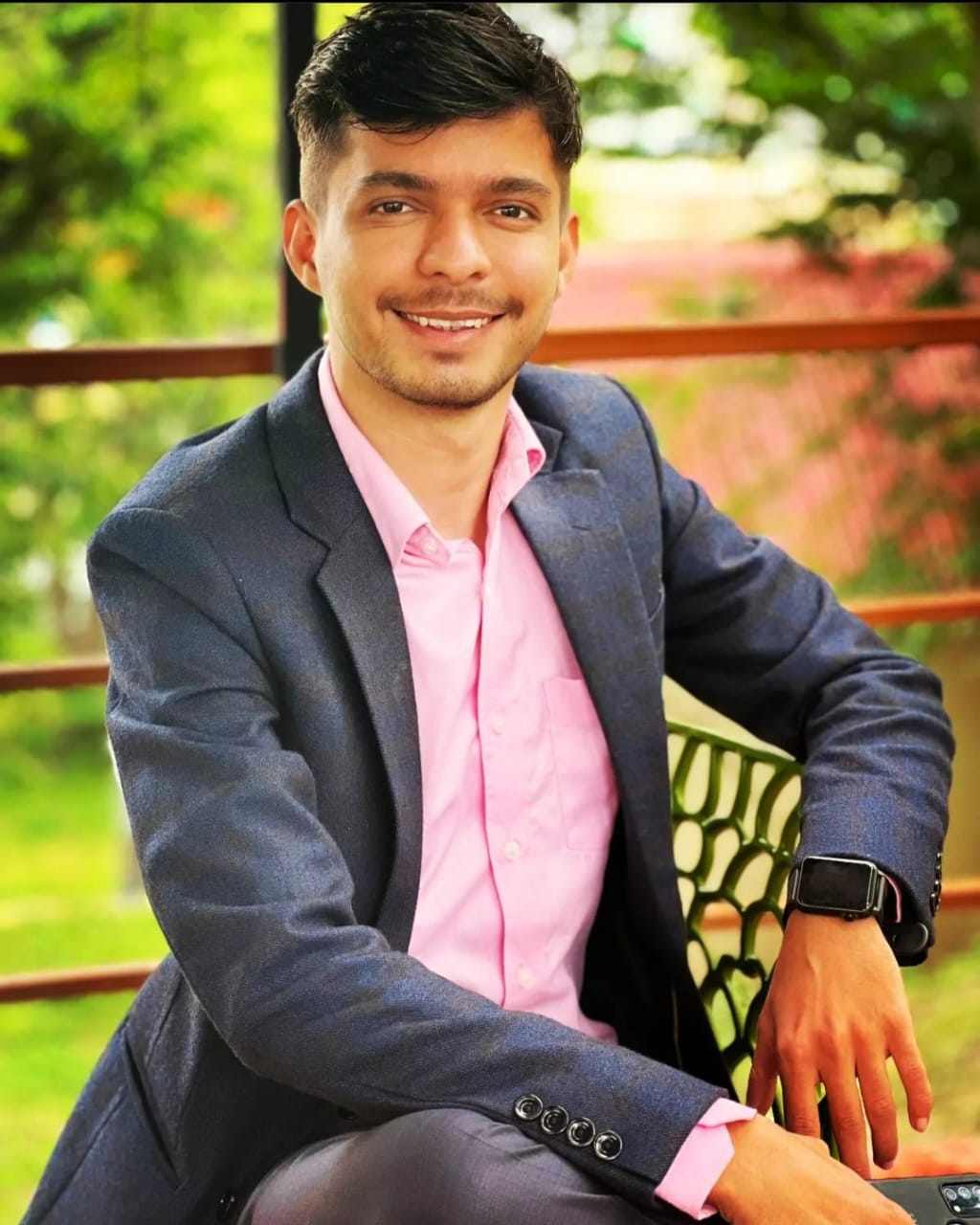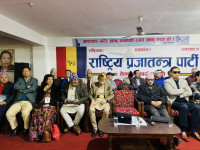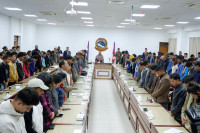Politics
Parties appear keen to attract youths to politics but can they?
The emergence of new political forces and the declining popularity of the traditional parties among youths have triggered such a move.
Nishan Khatiwada
Traditional parties have announced a series of youth-centric programmes aiming to boost youth participation in politics. They have accorded the importance to youths also for their decisive role in electing candidates, according to party leaders.
The Nepali Congress announced a policy hackathon on economy and climate on the occasion of the International Youth Day as per the party’s annual calendar. The participants have to present a paper on one of the two issues—gig economy and climate change action plan. The winning team will get Rs300,000, the one finishing second Rs150,000 and the third Rs50,000.
Congress General Secretary Gagan Thapa said the youths have ideas on what work needs to be done to prop up the economy and address climate issues. “But we have not been able to listen to them and they have also not been able to express their ideas,” Thapa said. “Thus, the Nepali Congress has launched this programme for youths under 40.”
The UML has fixed the quota for youth’s participation in the party. The central secretariat meeting of the party on Monday specified a percentage of youths under 40 to be in its committees from provincial to local. From upcoming provincial conventions onward, at least 10 percent of the party’s chapter members will be youths. In district committees, there will be at least 15 percent youths while 20 percent of the municipal committee seats will go to the UML. Towards grassroots, one third of the ward and area committees should be aged below 40.
Mahesh Bartaula, the UML whip in the House of Representatives, said the party has felt an urgent need to bring in more youths to leadership positions at various levels. “Recently, a large number of youths seem to be pulling themselves out of politics while many have been awaiting chances to serve the party in leadership positions,” said Bartaula.
A first time lawmaker, Bartaula himself was appointed whip, a position that has an important role in the House. Also, chief whip of the same party, Padam Giri, is one of the emerging leaders. UML Parliamentary Party leader KP Sharma Oli’s move to have the two young leaders in visible parliamentary roles is a step towards leaving a positive impression on the younger generation, party leaders said.
Likewise, with an objective to attract the new generation to the major pro-monarch force of the country, the Rastriya Prajatantra Party (RPP) has started a ‘Navin [New] RPP’ campaign.
The right-wing RPP, on July 21, sought applications from leaders below 40 years for appointment to 20 central committee positions, giving a one-month deadline. Party leaders say the move also aims to promote meritocracy. The party is said to be planning to induct youths to the central committee, based on merit and the principle of proportional inclusion.
Among the major traditional forces that held their general conventions in 2022, RPP was the only party that elected the new leader as the party chief. When Nepali Congress, CPN-UML and CPN (Maoist Centre) re-elected their respective party chiefs for one more term, members of the pro-monarch party RPP favoured a new leader, Rajendra Lingden, in place of the veteran Kamal Thapa.
RPP leaders now claim that they want to cash in on that environment and attract more youths in the lower committees as well.
However, the party’s office bearers’ body is still heavily dominated by old leaders who have been in leadership positions since the Panchayat era and want a revival of the Hindu Kingdom, while doing away with the newly-adopted federal system.
“Traditional parties do not want to lose the support of youths in the constituencies, and are thus under pressure and putting in efforts to increase their participation,” said Shankar Tiwari, a political observer who is a member of the Congress. According to Tiwari, the Nepali Congress has not made a policy-level decision to increase youth participation. Yet, the youths have been proposing programmes in a challenge for the leadership.
On the other hand, Tiwari added, though the UML and the Maoist Centre have made policy decisions to increase youths’ participation, they have failed to implement them so far.
Last year’s general elections have led to a rise of some new political forces. Many new faces were also elected to the federal parliament. Nepal has elected around 50 percent new faces from last year’s general polls.
As many as 12 political parties and five independent candidates were elected to the House of Representatives from last month’s polls. Of them, three parties—Rastriya Swatantra Party, Janamat Party and Nagarik Unmukti Party—made it to Parliament with impressive performances in their very first attempt.
The Rastriya Swatantra Party, which fielded relatively younger candidates, won 21 seats in Parliament to become the fourth-largest force. It also registered impressive victories, defeating the candidates of the coalition of big parties in two of the three constituencies in the April bypolls.
In Madhesh, the CK Raut-led Janamat Party, which also fielded some youth candidates in its maiden public test, won six seats and became a national party. Raut himself trounced a key Madhesi leader, Upendra Yadav, in his home district Saptari.
Such results have prompted traditional parties to increase youths’ participation in their committees and wings, say leaders.
“Yes, it is also true that there is frustration among youths due to the traditional parties’ failure to deliver, and ‘no vote’ from youths contributed to the emergence of the new political forces,” said Bartaula. “Even though we have received some warnings against our working style, we have been trying to increase the youth participation. In the last elections, UML had also fielded youths but many did not win.”
Tiwari said that in the last general elections, youths were disenchanted not with the political parties but with the tried, tested and failed leaders. “Thus, they began to seek alternatives,” he said.
Observers, however, say the traditional parties have not been serious in increasing youths’ participation.
Political analyst Rajendra Maharjan said election results have alarmed the leaders of the major forces. “The youths have again come to the spotlight after the new parties put forth fresh faces,” he said. “In the election, too, some new faces trounced political heavyweights. The traditional parties fear that if they do not ride the new wave, they might be wiped out.”
Some recent reports also suggest that the voter base of large parties has shrunk. The election results also hinted at that.
In terms of proportional representation, the UML received 26.9 percent votes in the 2022 general elections, down from 37.1 in 2017. Similarly, the Congress got 25.7 percent of the votes, down from 36.6 in 2017. The Maoist Centre received the third-largest proportional votes—11.1 percent. It was 15.3 percent in 2017.
According to Maharjan, the decreasing number of cadres in traditional parties will diminish their strength. The old forces are trying to show they prioritise youths. “But they have actually been neglecting youth issues and fear youths reaching top executive positions,” Maharjan said. “The old leadership still wields power.”
If the scenario continues, he said, such moves will merely be ritual while youths want something more substantive.




 15.12°C Kathmandu
15.12°C Kathmandu















